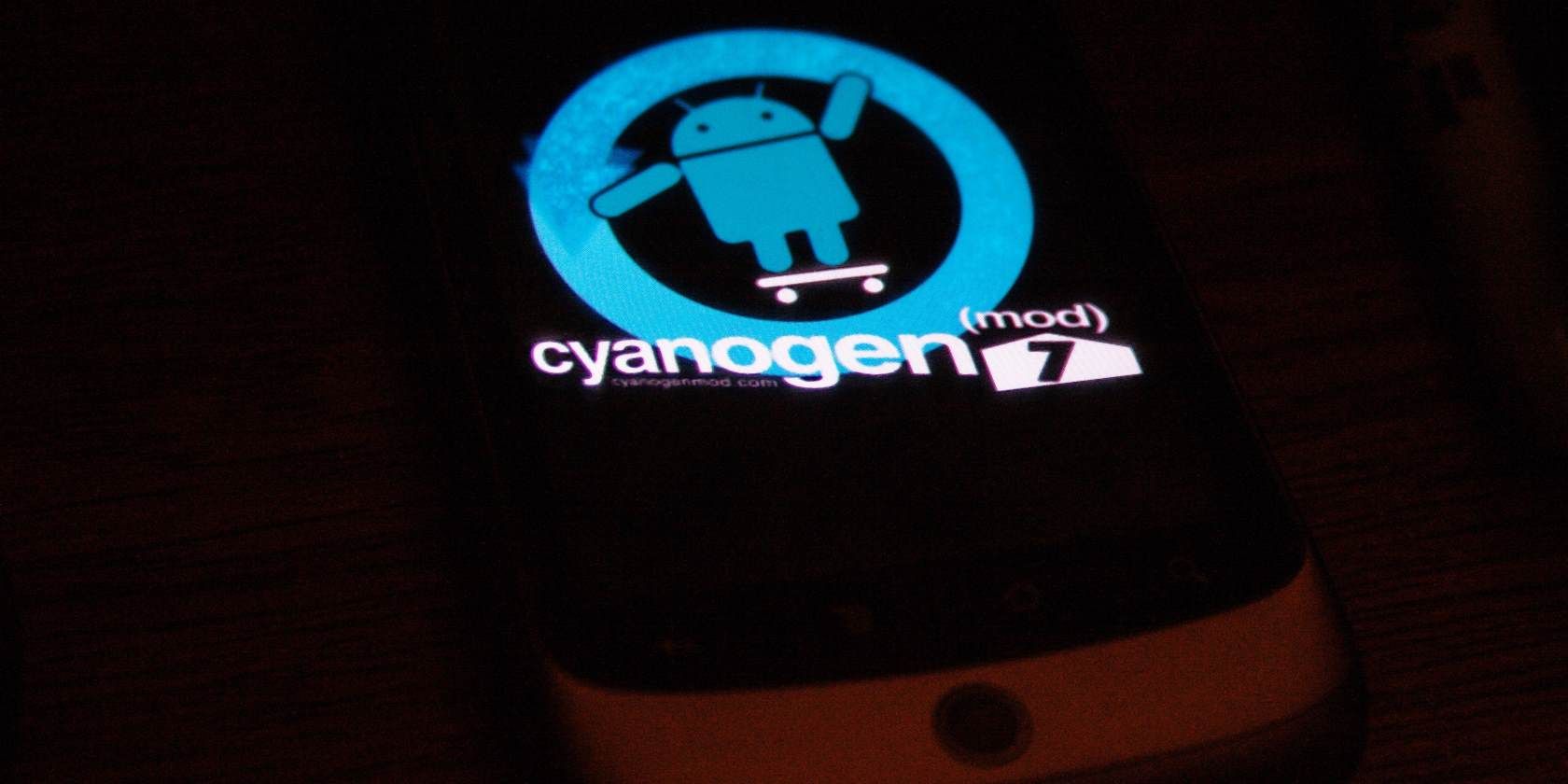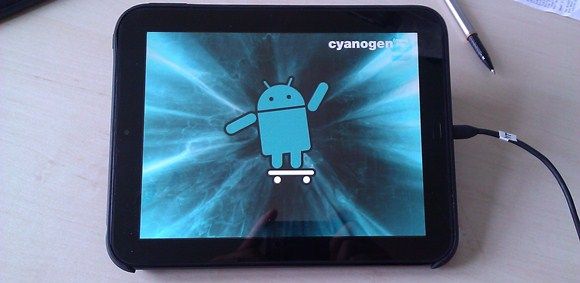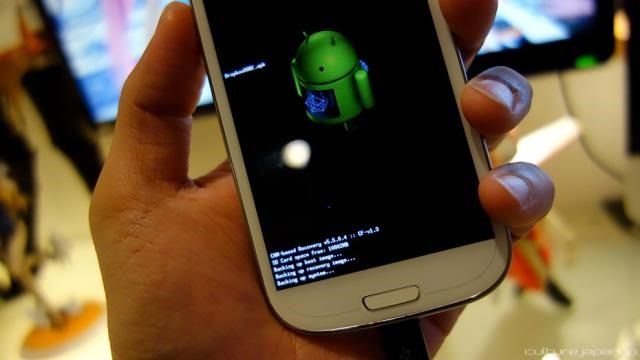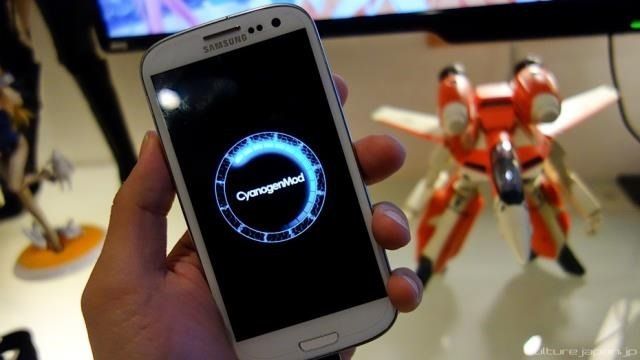Custom ROMs are third-party builds of Android that you can install on your Android phone or tablet. You can even install them on some devices that didn't originally ship running Android, such as the ill-fated HP TouchPad. Custom ROMs are powerful and allow you to get the latest version of Android without any manufacturer-installed junk and with advanced features and tweaks. But they have downsides, too.
While Android fans extol the virtues of custom ROMs, many never stop to note that custom ROMs aren't an ideal solution for everyone or every device. They may be useful in many cases, but custom ROMs can also lead to problems.
Is It Worth It?
Before picking up a new Android phone or tablet and racing off to install the latest custom ROM, ask yourself why you're doing that. Do you want the latest version of Android on your device, are you trying to remove junk apps installed by your manufacturer or carrier, or do you just want a variety of additional features and tweaks you can't get unless you install a custom ROM?
If you have a new phone with a fairly recent version of Android -- anything Android 4.1 or newer -- you shouldn't feel a strong urge to upgrade. Sure, Android 4.3 is available with 4.4 on the way soon, but Android 4.2 and 4.3 are fairly minor updates. Android 4.0 and 4.1 were both significant upgrades, but 4.2 and 4.3 aren't anywhere near as big a deal. Many of the new features that have been introduced since Android 4.1, such as device tracking, have been rolled out to every device.
You could also disable manufacturer-installed bloatware or root your device and use Titanium Backup to remove it entirely. This doesn't require getting a custom ROM.
It's important not to just install a custom ROM for its own sake -- unless you're an Android geek that just wants to mess around -- but to have a good reason for doing it. For example, maybe you have an HP TouchPad with the defunct WebOS operating system or maybe you have an older Android phone that was never updated to Android 4.0. Using a custom ROM often involves a trade-off.
Manufacturer Software and Optimizations
The versions of Android that come with Android phones and tablets definitely have problems -- they're often slow to get operating system updates and filled with carrier-installed bloatware like a NASCAR app -- but they also have advantages. Updates may take some time to arrive, but they're official and delivered to you over the air. The manufacturer and carrier have put time into polishing and bug-testing your device, ensuring it doesn't crash during phone calls -- yes, this may happen on some custom ROMs.
You're giving up this polished experience by installing a custom ROM, but you're also giving up other manufacturer tweaks and optimizations. For example, if you have a Samsung Galaxy S4 and install a custom ROM like Cyanogenmod, you may be giving up useful Galaxy features like the ability to have two apps on screen at once. Some custom ROMs may incorporate such manufacturer features, but many do not.
Samsung and HTC both offer "Google Play Editions" of their Galaxy S4 and HTC One phones. These editions remove much of the manufacturer-installed software and offer a "cleaner" experience with mostly stock Google software. Even on such officially supported ROMs, many reviewers noted that camera performance wasn't as good. The devices captured better photos with their cameras when used with their default, optimized ROMs rather than Google's stock ROM. This is the kind of thing you may be giving up by installing a custom ROM.
Warranty Issues
Theoretically, installing a custom ROM will often void the warranty on your phone or tablet. Some phone manufacturers -- like HTC -- ship their devices with a locked bootloader. They allow you to unlock the boot loader, but only by agreeing to limitations on your warranty first.
If you install a custom ROM, then discover a problem with your phone or tablet, the manufacturer or carrier may blame the custom ROM first. If your device is still under warranty, bear in mind that installing the custom ROM may cause you hassles in the future.
While custom ROMs may cause many problems, such as crashing apps and poor battery life, they won't cause hardware failures. You could always uninstall the custom ROM and revert to your manufacturer-provided ROM before taking the device in for service, assuming it's working well enough that you can boot it and switch ROMs.
How Well-Supported is Your Device?
Before installing a custom ROM, be sure to consider how well-supported your device actually is. For example, if you have a common smartphone such as an HTC One, Nexus 4, or Galaxy S4, there's a good chance that the custom ROM community for such devices is thriving and active.
If you have a cheap Android smartphone that you purchased from a carrier a few years ago or a dirt-cheap tablet imported from China, there's a good chance that the custom ROM communities for these devices aren't very active. Even if custom ROMs for such devices are available, they may have problems -- for example, they may not support some of your device's hardware or drain the battery faster than the default ROM.
Before you install a ROM, check how well your device is supported by popular custom ROMs like Cyanogenmod and examine the XDA Developers forum for your device to see how well its custom ROMs work. Don't be surprised if no good custom ROM is available for uncommon devices.
Be Prepared for Bugs and Less Polish
If you're lucky, you may install a well-tested custom ROM like Cyanogenmod on a popular, well-tested device like a Nexus 4 and have very few issues.
However, many custom ROMs will have problems. This is especially true if you use a more uncommon device or a niche custom ROM developed specifically for that device. You may run into a variety of problems:
- Bugs and Glitches: Certain apps the custom ROM's developer didn't test may not work properly. Apps may force-close or have other bugs.
- Hardware Compatibility Issues: A custom ROM may not be able to support a device's camera, Bluetooth may appear to work much of the time but occasionally crash, or the custom ROM may not be capable of reading the device's sensors properly. Manufacturers make a variety of tweaks in software and custom ROMs can break things. For example, we once saw a phone where the camera was built into the device upside down. The device's manufacturer made a tweak in software that flipped the image, allowing the camera to work normally. After a custom ROM was installed, images from the camera appeared upside down because the custom ROM hadn't accounted for the phone's odd camera configuration.
- Worse Battery Life: The phone's default ROM may be better optimized for battery life than the custom ROM is. The custom ROM may drain battery power faster than the stock ROM if the custom ROM doesn't allow the hardware to go into maximum power-saving mode. On some devices, the custom ROM may include less junk apps running in the background and may offer improved battery life.
Custom ROMs are a powerful option for Android users, giving us more flexibility. But not every Android user should install a custom ROM, and good custom ROMs aren't available for every device.
If you are interested in using a custom ROM, you should read the experiences of other users who have installed that custom ROM on their device. This will inform you of any problems and you'll be able to decide whether you want to accept the problems for the benefits of using the custom ROM. You can often find such information on the XDA Developers forum for your specific device.
Do you install custom ROMs on your Android devices? Have you run into problems while using them? Leave a comment and share your experiences!
Image Credit: eggrole on Flickr, Danny Choo on Flickr, Danny Choo on Flickr




